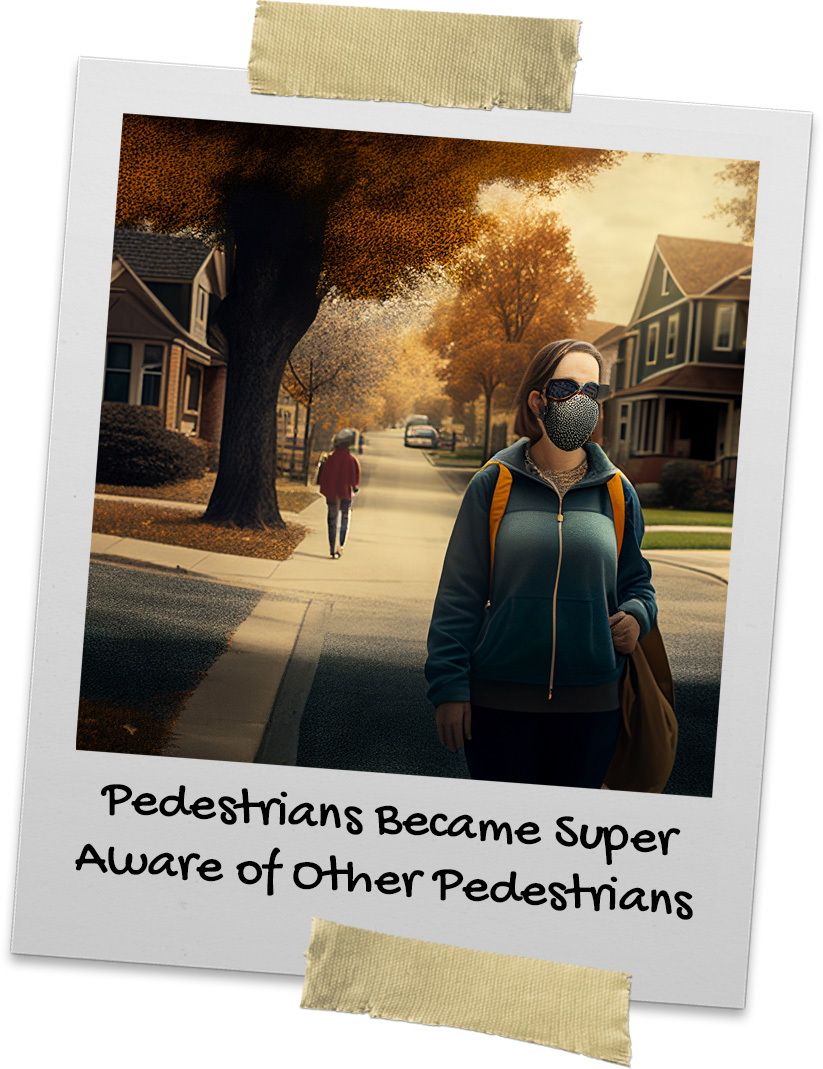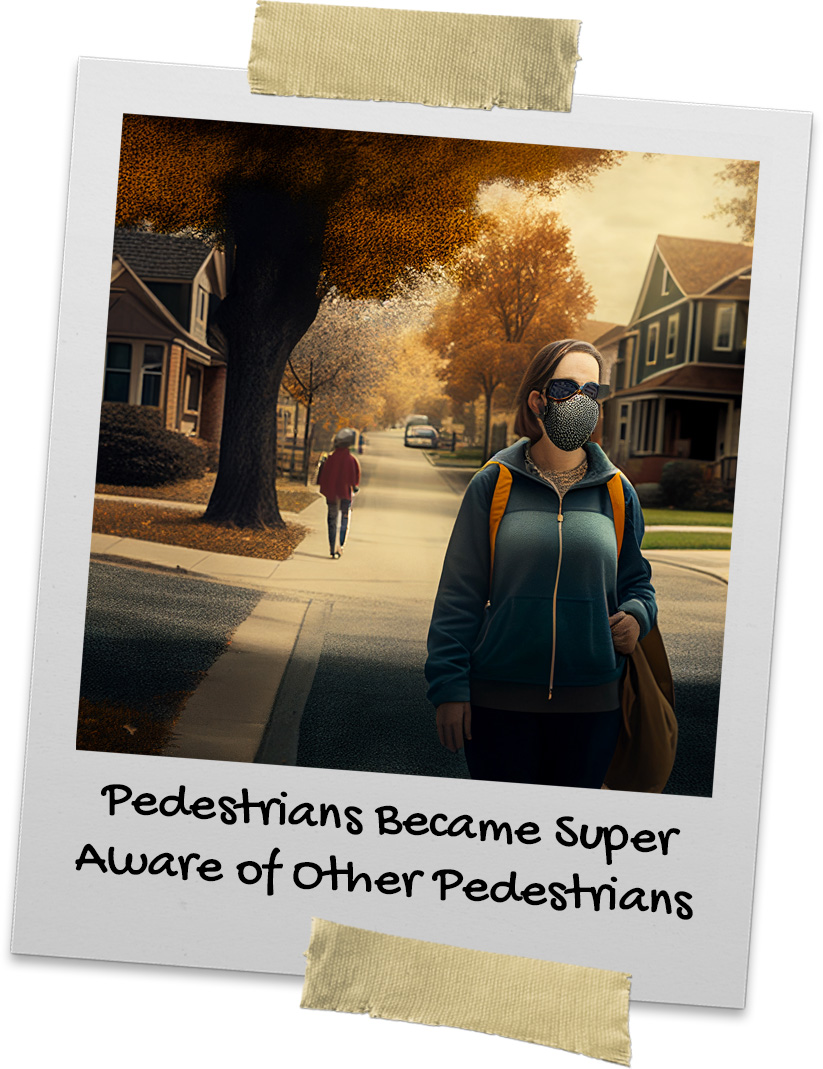Pedestrians Became Super Aware of Other Pedestrians


People across the globe scrambled to understand and respond to the crisis. Fear and uncertainty were rampant. Science was unsettled. And for many people, this fear manifested itself in strange ways.
Even in the lockdown period, people would still leave their houses to get some exercise, and of course dogs still needed to be walked. Sometimes people just needed to clear their minds and take a walk, especially those that were cooped up in their houses all day. But on their walk, they might encounter a neighbor who was also in that same mindset.
In a previous era, the friendly neighbor might have stopped and had a quick chat with their neighbor. To comment on what a beautiful day it was, how nice their lawn is looking, or other neighborly niceties. But one of the most common behaviors that emerged early on was for people to give other pedestrians wide berths when they encountered each other on the streets or sidewalks.
Whether it was out of a genuine concern for their own safety or simply a subconscious desire to avoid any unnecessary interactions, many people found themselves not wanting to be the person to create an uncomfortable situation, even if it meant crossing to the other side of the road to avoid confrontation altogether.
Even if one person was totally comfortable, they never knew how the other person would handle a stop and chat. The six-foot social distance rule was a guideline, but far from hard science early on. And if heaven forbid one of the people was wearing a mask while walking alone (yeah, that happened) it was almost like a big blinking billboard that said, “Leave me alone. Do not engage with me!”
For some people, the fear of encountering others during the pandemic was so strong that they went to extreme lengths to avoid it. This included wearing face masks and gloves in public, even when it was not required by law, and avoiding crowded areas altogether. For others, the fear was more subtle, manifesting itself in the way they interacted with others or in their body language. It was one of the new social cues that people had to learn during the start of the pandemic.



